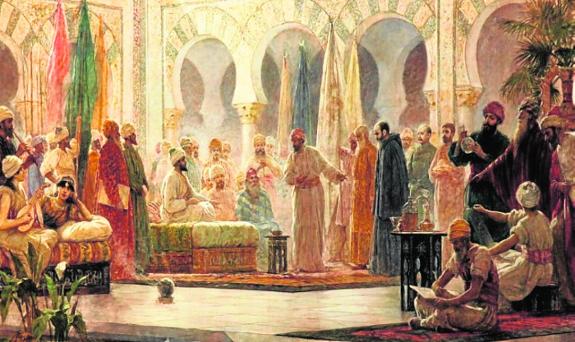

Sections
Highlight

Alekk M. Saanders
Friday, 16 October 2020, 13:04
Compartir
The Umayyad prince Abd al-Rahman III became the eighth Emir of Cordoba on 16 October 912. In 929 he founded the Caliphate of Cordoba and proclaimed himself caliph. His reign is remembered as a golden age of Muslim Spain.
Abd al-Rahman was born at the Umayyad royal court in Cordoba in 890. He was fair-skinned, blond and had blue eyes because of his Arab and Hispano-Basque ancestry. His mother was Muzna, a Christian concubine, possibly from the Pyrenean region. Moreover, the grandmother of his father was the Basque princess Onneca Fortúnez from the Kingdom of Pamplona, later known as the Kingdom of Navarre. According to legend Abd al-Rahman tried to look more like a typical Arab Umayyad and even dyed his beard black.
At the same time, Abd al-Rahman kept the peace with the northern Christian kingdoms, and during the first 20 years of his rule, he avoided military action against Asturias and the Kingdom of Navarre.
Abd al-Rahman spent his youth in his mother's harem where his sister was put in charge of his education. He was considered a great humanist and patronised the arts, encouraging craftsmen and architects. In Cordoba he built new mosques and even expanded the city's library, which became the most important intellectual centre of Western Europe.
His reign over Al-Andalus was marked by religious tolerance. Muslims, Christians and Jews lived in harmony. Non-Muslims were treated fairly and employed in some of the highest positions in the Umayyad administration. Hasdai ibn Shaprut, a Jew from Jaén, was personal secretary and doctor to Abd al-Rahman. In his struggle for fairness, the caliph even executed one of his sons for conspiring against him in 949.
When Abd al-Rahman III ascended to the throne, he recognised the problems of decentralised Umayyad rule. He made Cordoba a powerful centre and eventually declared the caliphate. As caliph, Abd al-Rahman ordered a fortified palace-city to be built as a symbol of his power a few kilometres from Cordoba. The huge palace, Madinat az-Zahra (today Medina Azahara), was modelled after the old Umayyad palace in Damascus, and named after his favourite wife.
In his later years Abd al-Rahman was said to have openly kept a male harem as well as a female one. It is said that Eastern European slaves, known as Saqaliba, were members of his harem, or even eunuchs. In total over 3,000 European eunuchs served Abd al-Rahman as both an elite guard and protectors of his harem.
During the reign of Abd al-Rahman III, the caliphate of Cordoba became more profitable by increasing public revenue. After his death, in 961, the state existed until 1031.
Publicidad
Publicidad
Publicidad
Publicidad
Reporta un error en esta noticia
Necesitas ser suscriptor para poder votar.